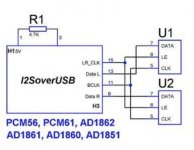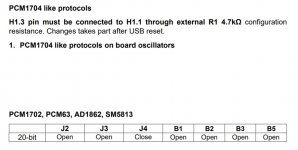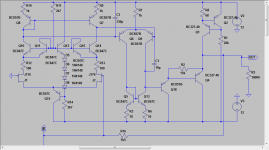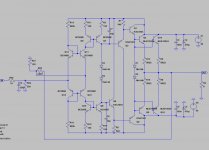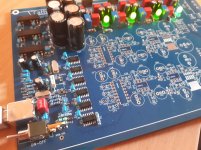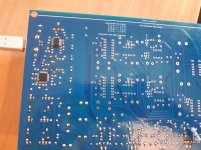I think it's a little different and it's not about anything else here: Reconstruction filter - Wikipedia
The only thing to note is that a hardware filter can still be good because of its severely limited capabilities, but it can never have the capabilities of a final fine-tuned software filter. At least technically not in the foreseeable future. Compare also (off-topic!) e.g. hardware digital crossovers with a software version like BruteFIR (Linux). The number of possible usable taps is extremely different!
Sorry, I naively assumed that you listen via computer. For me there is only PC (preferably HighRes), otherwise vinyl ...
By the way, my example command generates a 32 bit float file with 88.2 kHz, I just saw. In this respect my example is a bit "abstract", if it is an original 44.1 kHz file, because the example sinc filter is based on the 22.05 kHz. The pure unmodified 16 bit, 44.1kHz file command would then read like this:
sox input.wav output.wav rate -v sinc -a 120 -L -21000 -t 2100
or with the same original sample parameters:
sox input.wav -b 16 output.wav rate -v -L 44100 sinc -a 120 -L -21000 -t 2100
88.2kHz and 32 bit (without "-e float") would be a good way to convert SACD rips (DSD64) to PCM plus a noise filter. Here fs/2 is at 44.1 kHz. But this only works with the Sox version 14.4.2 from "Mansr".
You are definitely doing everything right with this great NOS DAC. If you don't like the complex software reconstruction filters, then leave them out and install the typical small hardware output filters at the end. Or whatever you like
Sox can also play the files live as a player. There is another commercial program (name escapes me) that can do that too. But that's a separate topic again. You can use Pi in principle.
The only thing to note is that a hardware filter can still be good because of its severely limited capabilities, but it can never have the capabilities of a final fine-tuned software filter. At least technically not in the foreseeable future. Compare also (off-topic!) e.g. hardware digital crossovers with a software version like BruteFIR (Linux). The number of possible usable taps is extremely different!
Sorry, I naively assumed that you listen via computer. For me there is only PC (preferably HighRes), otherwise vinyl ...
By the way, my example command generates a 32 bit float file with 88.2 kHz, I just saw. In this respect my example is a bit "abstract", if it is an original 44.1 kHz file, because the example sinc filter is based on the 22.05 kHz. The pure unmodified 16 bit, 44.1kHz file command would then read like this:
sox input.wav output.wav rate -v sinc -a 120 -L -21000 -t 2100
or with the same original sample parameters:
sox input.wav -b 16 output.wav rate -v -L 44100 sinc -a 120 -L -21000 -t 2100
88.2kHz and 32 bit (without "-e float") would be a good way to convert SACD rips (DSD64) to PCM plus a noise filter. Here fs/2 is at 44.1 kHz. But this only works with the Sox version 14.4.2 from "Mansr".
You are definitely doing everything right with this great NOS DAC. If you don't like the complex software reconstruction filters, then leave them out and install the typical small hardware output filters at the end. Or whatever you like
Sox can also play the files live as a player. There is another commercial program (name escapes me) that can do that too. But that's a separate topic again. You can use Pi in principle.
Last August I built my first example of miro's lovely little dac board. Last night I finished numbers 6 and 7. It's not as crazy as it sounds, though. The two bare boards came as gifts through the diyaudio stuff-economy, and since the chip sales haven't needed the spares set aside for losses and damage I had a couple of new AD1862s available.
With Jason's permission, you'll see these two as auctions soon. 100% of the funds will benefit diyaudio's preferred charities. The one on the left is set up for experimenting, with sockets for op amps and the audio-side electrolytics. The one on the right is Vunce-style with SOIC op amps and set up to plug in and listen, with LM6171s and Silmic II audio caps soldered in.

With Jason's permission, you'll see these two as auctions soon. 100% of the funds will benefit diyaudio's preferred charities. The one on the left is set up for experimenting, with sockets for op amps and the audio-side electrolytics. The one on the right is Vunce-style with SOIC op amps and set up to plug in and listen, with LM6171s and Silmic II audio caps soldered in.

Almost done with my V1.1 board, a bit late for the party.
May i know how can i connect the JLsound I2SoverUsbiii to the Dac board without shift registers installed.
JLSound 4 wires out....
I2SoverUSB BCLK (H3:11) —> BCK Dac
I2SoverUSB DATA (H3:13) —> DATA Dac
I2SoverUSB LR (H3:15) ——> LRCK Dac
GND (H3:14...) ——> GND
5 wires into the Dac board...
DL
DR
BCK
LRCK
GND
Thanks!
May i know how can i connect the JLsound I2SoverUsbiii to the Dac board without shift registers installed.
JLSound 4 wires out....
I2SoverUSB BCLK (H3:11) —> BCK Dac
I2SoverUSB DATA (H3:13) —> DATA Dac
I2SoverUSB LR (H3:15) ——> LRCK Dac
GND (H3:14...) ——> GND
5 wires into the Dac board...
DL
DR
BCK
LRCK
GND
Thanks!
Here you go
Here's what I had in mind for the SE classA OPS. I couldn't get it to sim though, not sure what's gone wrong.
Attachments
@meanie
Try this configuration and let us know if that works
Hi Miro,
That config you mentioned works!
The Dac board is working now, will run it for a few days first.
Thank you so much!
I have a bad experience with the 2 transistors CCS. It gives good parameters in simulations, but I experienced problems in the reality - as if it didn't go up sometimes
Feel free to change it into a type which works for you. I've wired up a hundred or more over the years and not had a problem other than when I've missed out a wire
Almost done with my V1.1 board, a bit late for the party.....
Hi Meanie!
Better late than never
Enjoy your new Dac!
Another direct Right justified feed might be on the way from Amanero:
"Domenico from Amanero has been working on improving the 'Slave_RJLR' firmware for several months. Modified firmware should enable direct connection of old generation Dacs (for example: TDA1540, TDA1541, TDA1543, PCM53, PCM56, PCM58, PCM63, PCM1702, PCM1704, AD1861, AD1865) to USB-Amanero in slave mode (i.e. with external clocks) using Right Justified Data format." USB to I2S 384Khz - DSD Converter
"Domenico from Amanero has been working on improving the 'Slave_RJLR' firmware for several months. Modified firmware should enable direct connection of old generation Dacs (for example: TDA1540, TDA1541, TDA1543, PCM53, PCM56, PCM58, PCM63, PCM1702, PCM1704, AD1861, AD1865) to USB-Amanero in slave mode (i.e. with external clocks) using Right Justified Data format." USB to I2S 384Khz - DSD Converter
In case of Pedja Rogic "Discrete Diamond Non-Feedback I/V Stage" or EUVL's "Current Mirror Based IV Converter with Output Buffer" (or SEN):
Are only 2 boards with common ground connected for balanced operation per channel or how does the circuit look like with a "real" balanced circuit (->CRM)?
Are only 2 boards with common ground connected for balanced operation per channel or how does the circuit look like with a "real" balanced circuit (->CRM)?
...I've wired up a hundred or more over the years and not had a problem ...
I experienced the problem in this topology (R1, R2 were replaced by the CCS). Everything seems to work fine, scope without problems, music played ... but on a certain type of recordings there was audible something like intermodulation distortion
Attachments
I assume the drilling on the Miro's boards was not easy. It is a good way to save space and/or make digital front end wiring shorter
I like the polymer struts more than the metal ones (because damping
If you have the possibility one day, try a R-Core trafo, I often experienced when good enough made it adds more clearness, but smoother, without dynamic loss. At least that is what I experienced.
What are the big blue capacitors brand & model?
Last edited:
I figure out that the USBoverI2S can be piggyback on the Dac board, 3 holes out of the 4 mounting holes can be used (if drilled). I have not drilled yet but used a bit of glue to attach them. Not sure if any antenna effect, so far so good, nice, and smooth music at the moment.
I may buy some R-Core trafo from HK source to try out.
The blue caps are ELNA, it's from a past phono ps board.
Thanks for sharing your experiences.
I may buy some R-Core trafo from HK source to try out.
The blue caps are ELNA, it's from a past phono ps board.
Thanks for sharing your experiences.
- Home
- Source & Line
- Digital Line Level
- DAC AD1862: Almost THT, I2S input, NOS, R-2R

